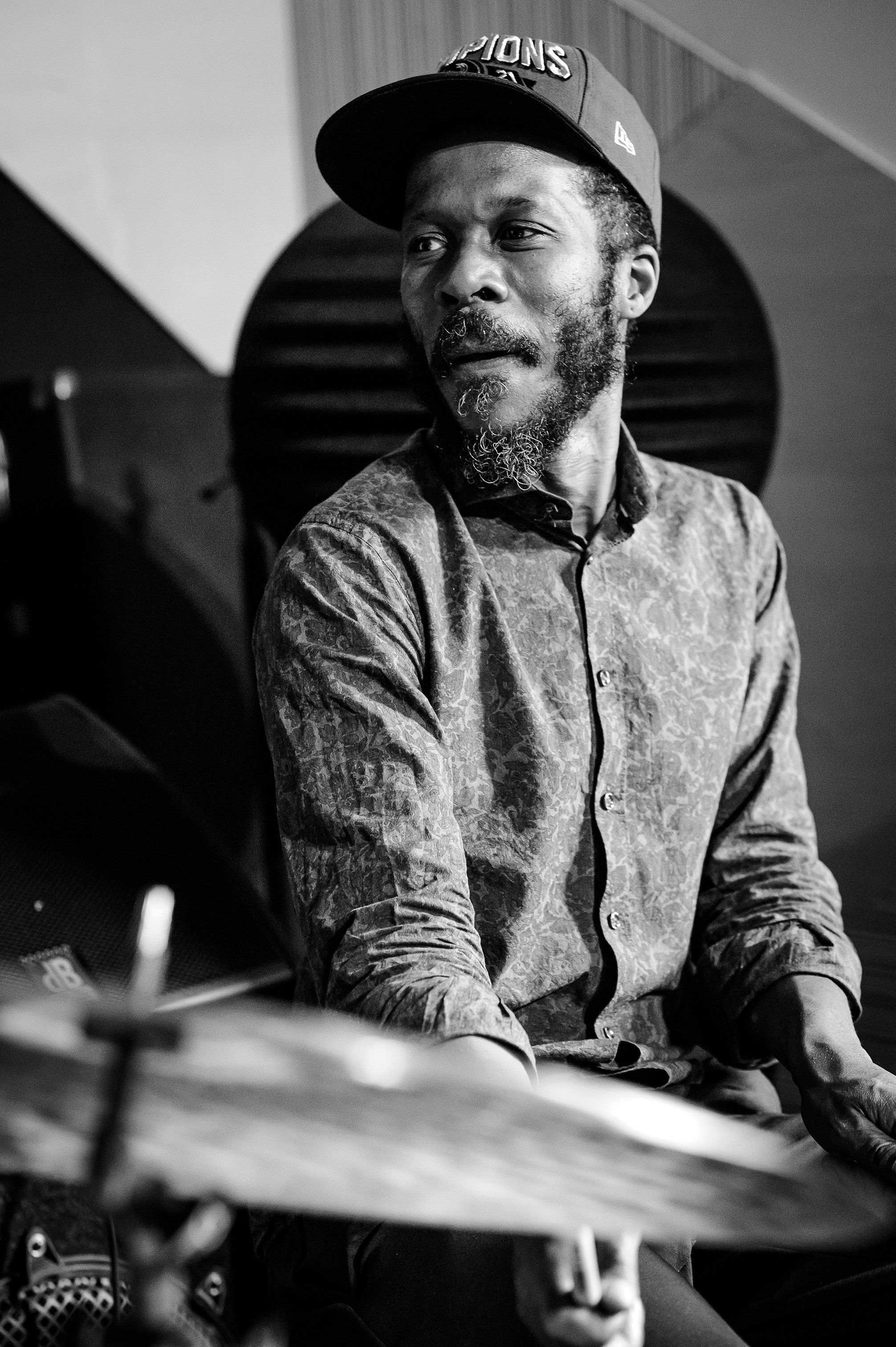
TEACHING
PRIVATE INSTRUCTION
As bassists in today's world of jazz we tend to be overlooked and under "listened" to. Sad to say most of the blame lies within us. We have fallen into this lazy tendency of "oh, they're not listening anyway" and subject ourselves to the "stock" bass lines. The reason they're not listening friends is because we're not giving them anything to listen to. It's about our note choice, our sound, our harmonic choices, our rhythmic choices; if we investigate these options and apply them to our performances, we can achieve better results and explore more possibilities!
In the One on One lessons, we work on a multitude of ways to ameliorate your performance in the practice room and on the gig.
We'll look at the necessary tools for achieving a good sound on your instrument.
-
Bass: Technique - Major scales 3-4 octaves Pizz. and Arco in circle of fifths starting @ 60 BPM
- Minor arpeggios (1, 3, 5, 7, 1, 3, 5, 7, 1, 3, 5) in circle of fifths Arco starting @ 60 BPM
- Diminished arpeggios ‘ ‘ E, F, F# starting @ 60 BPM
- Ring’s Things starting @ 70 BPM up to 120 BPMHarmony: Piano - Major Arpeggios 4 octaves @ 45 BPM (this is just to HEAR, not for fingerings) in the circle of fifths.
- Hold Minor chord down with sustain pedal (in any inversion you can) (with bass) & play corresponding minor scale @ 60 BPMRhythm: Drums - Walk the dog with hi-hat on 2&4.
-
Recordings: What are you listening for and who is playing it?
Learning Tunes: Choose 5 different recordings of the same tune and listen on repeat for a day. What are the similarities and differences? Transcribe the spots that speak to you--at the end you will have a firm ground on all the necessary material for that song.
-
Do you know the changes? Well enough to play on piano?
In theory: What could you play to change the direction of a soloist or section? What can you do to increase the momentum of the band?
-
Choose a page of 8 to 16 melodic phrases in any book or tune, classical or jazz; that you’ve never seen before and try to get it in the least amount of time.
*Using a pencil, writing in fingerings, phrase shapes, and tricky rhythms that occur in the passage.
-
Pick any Bach Cello Suite Movement.
It is currently only possible to book a minimum of (4) four private lessons. Please use our lesson request form below to inquire about Joe's availability and scheduling options.
MASTER CLASS OUTLINE
Master Classes are available for groups of 6-10 students and usually run between 90-120 minutes. Please use the form below to inquire about booking a Master Class. It is also possible to book a group ensemble class, which can be as many as 30 students in one class. The following topics are the focus of the masterclass:
-
Sound:
a. achieving the best sound, with the least amount of work
b. making every note audible whether playing short or long notes (when playing long notes, striving to have all the notes the same length).Technique:
a. being comfortable and knowing every note of the bass
b. analysing different ways to practice better technique -
Note Choice:
a. When playing with a group, it's about finding the notes that enhance the harmony while staying in sync with the changes.
b. Influencing the soloist with your notesRhythmic Choice:
a. Whether playing in odd meters or even, knowing what is the underlying rhythmic pattern and finding a bass line to correspond accordingly
b. Knowing how short & long notes effect the rhythmListening & Responding:
a. Learning and applying how to react to a soloist or accompanist while still being in the moment. -
Melody:
a. Using the melody to construct a good solo.Singing:
a. Using singing as another means of expression and as a way to practice learning tunes. -
Harmonic & Rhythmic Structures:
a. Finding what harmonic & rhythmic structures suit you.
b. Finding and hearing and developing harmonic & rhythmic to play and compose.Techniques:
a. Using the piano first and conceiving simple motifs and then applying them to paper.
b. Using written techniques first, conceiving simple motifs to apply to the piano.
